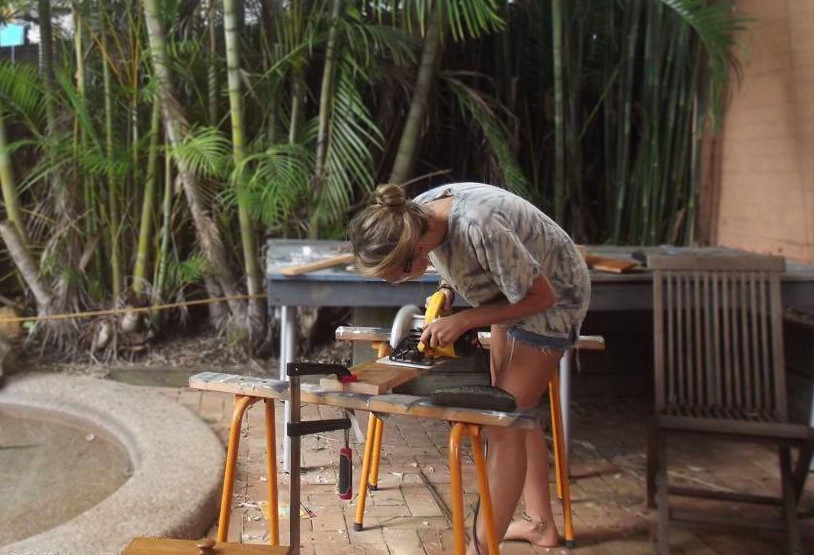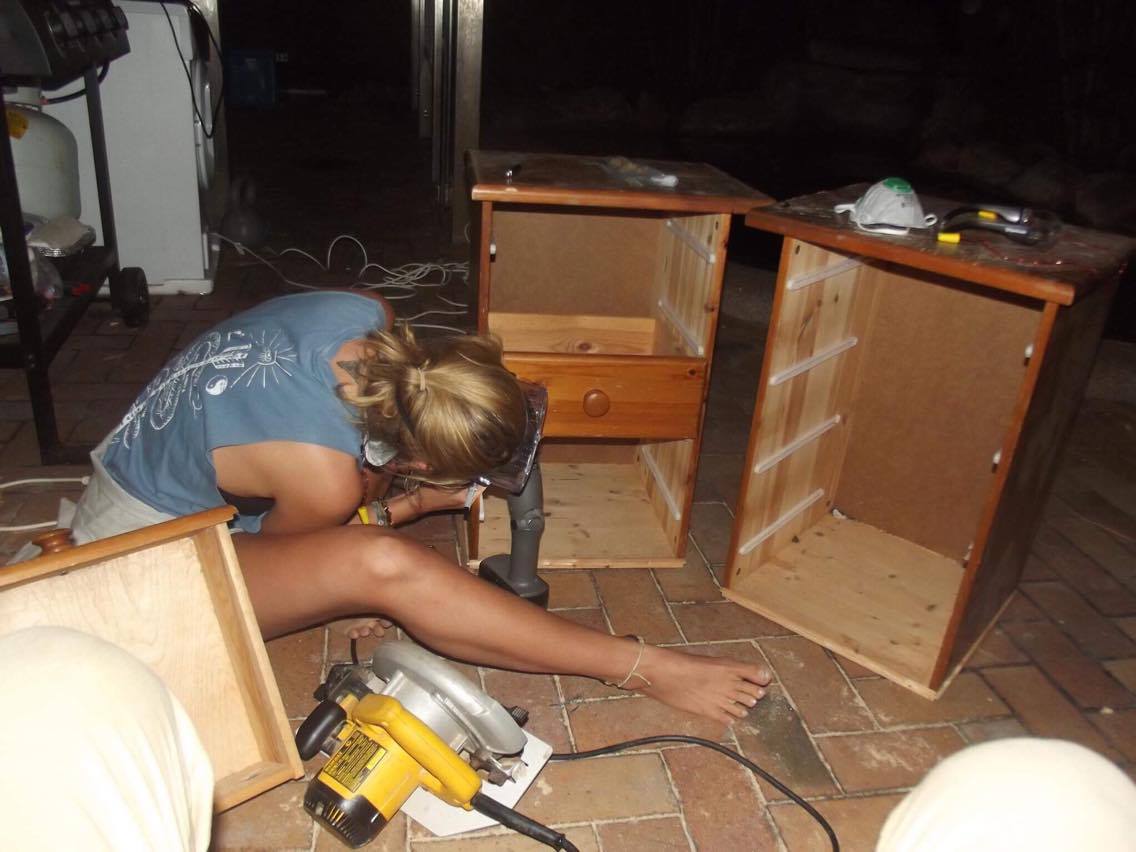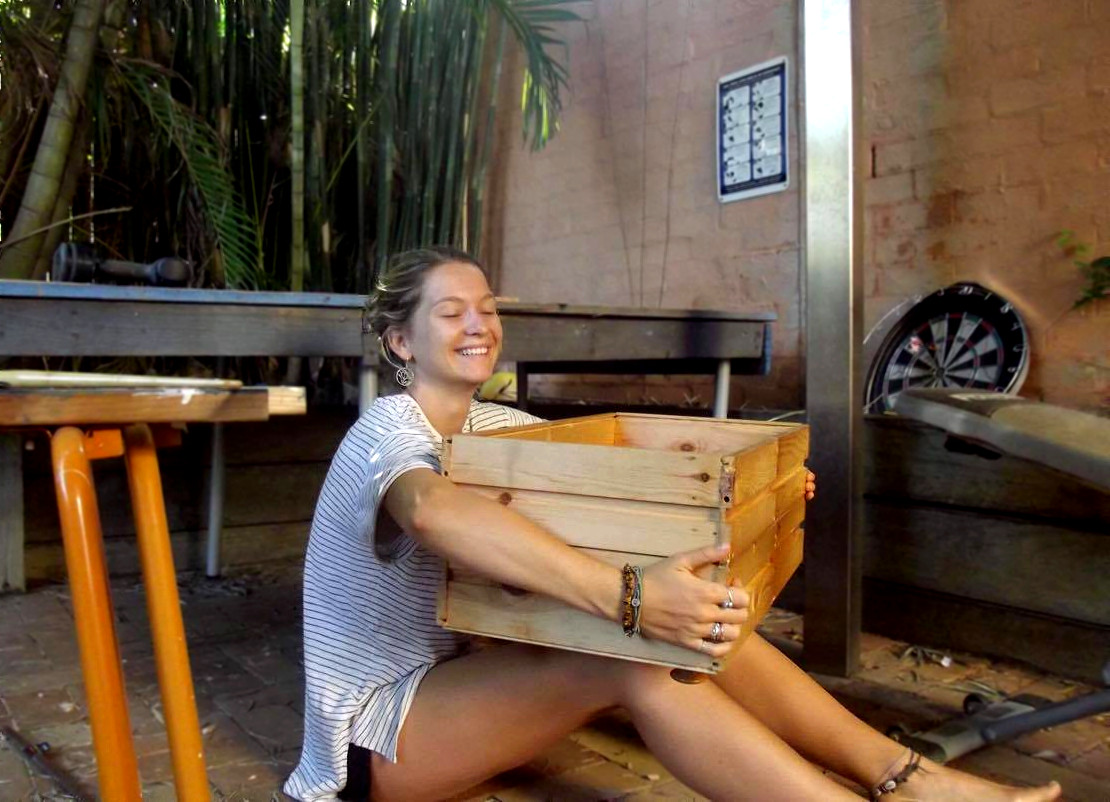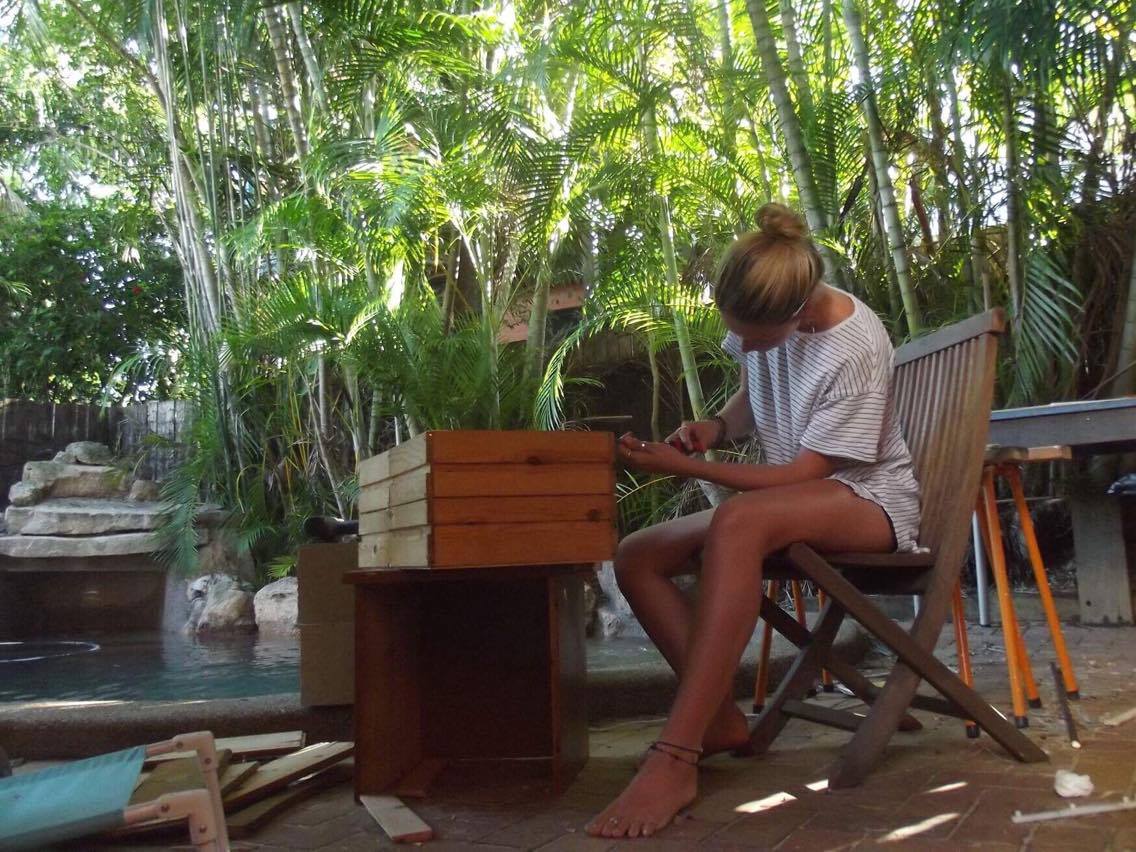 Big thumbs up for free scrap wood!
Big thumbs up for free scrap wood!
As you probably know by now (if you don't, check out our intro), Bridget will be in charge of all things wooden on our house bus. Which means she has however long it takes for us to find a bus to fully master woodworking.
Growing up, her father was a very handy man, but also very old-fashioned, so she mastered hand tools from a young age but was never really introduced to power tools. That's where Professor Alex steps in...
First things first...
She hopped on Gumtree and bought herself a whole bunch of second-hand power tools. She managed to bag herself a good quality circular saw, jig saw, belt sander and router, a couple of saw horses and a spirit level, all for $120 (AUD)... Bargain! Then, being the penny-pincher that she is, and also having a very strong loathing for wasting any kind of material, she refused to buy wood. So she rummaged around the house for any scrap wood or unwanted furniture she could use, and came across an old computer desk of mine sitting in the garage, abandoned and purposeless. A perfect starter project!
I demonstrated the ABCs of each tool, as well as the necessary safety precautions to take before using any power tool, and off she went. She was a little nervous at first, but her confidence grew with every cut. Soon enough she was whistling while she worked; a surefire sign that she was sufficiently comfortable and didn't need me constantly breathing down her neck.
 Bridget's first cut with the circular saw
Bridget's first cut with the circular saw
So we have the tools and the material, now what to build...
Bridget has been desperately needing new planter boxes for her vegetables for a couple of months now, but, naturally, has been reluctant to buy any. So she decided that would be the perfect starting project for her; nice and simple to start, and an outcome that fits a purpose.
 Bridget dismantling the desk, after cutting it in half
Bridget dismantling the desk, after cutting it in half
The making of the planter box...
So she got to work dismantling the desk into its base parts. Once it was broken down into parts she liked the inlay of the inside of the drawers, and chose to use them as the sides of her box. For the bottom, she sandwiched two pieces of MDF (from the back of the desk) together with wood glue to give it strength and rigidity. She used dowels to hold it all together, along with more wood glue and nails, to make it extra secure.
Now the main body of it was all fully assembled, and hopefully strong enough, she had to take into account the nature of its purpose, and give it some kind of protection against rot. The first thing she did, mainly to protect the wooden floor it would sit on rather than the just planter box itself, used the knobs from the drawers to make four little feet on the bottom, to raise it a bit off the floor, minimising the damp and inevitable rotting underneath the box.
She nearly coated it in some diluted PVA wood glue (because she didn't want to take another trip to Bunnings), just to give it a light glaze to give the wood some protection. But Google suggested (and we all know Google knows best) a more natural solution in the form of linseed oil. Linseed oil, it turns out, is a great alternative for finishing wood. It provides a natural protection while allowing the wood to keep the natural beauty of its grain. But what sold it for us was that being a natural oil rather than a toxic varnish, it would eliminate all those horrible chemicals permeating into the soil, and being put into our bodies unnecessarily when we eat the vegetables.
 Bridget giving her box some loving
Bridget giving her box some loving
A quick evaluation...
A few days after she'd finished the box, transferred her vegetables into it, and gotten over the excitement of it all (yes, boxes can be exciting), we were sitting on the deck admiring it. I asked her how she thought it went; any hurdles she encountered and how she overcame them, what she'd change next time, what she found out along the way, etc. She said she was very pleasantly surprised with how it turned out. She loved learning how to use all the tools and planning how she was going to turn the unwanted desk into something useful (it sounds like we may have found her a passion in upcycling furniture!). She said that she sees now that measuring is key, as she measured a couple of pieces of wood incorrectly and had to discard them from this project. She now knows to always measure twice. But her most astute observation from doing this, and the most important thing she will take away from this, is that, and I quote, "dirt is heavy". Yes Bridget, yes it is.



